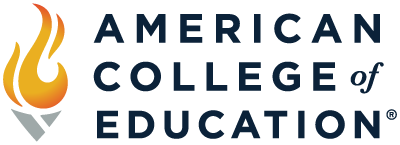
Who doesn’t love a good change of pace? I mean, a drastic, last-minute, complete shift without any preparation or support. Sounds like fun, right? Kidding, but change can be a really good thing. Can you imagine teaching in a one-room schoolhouse? I don’t even want to go back before one-to-one devices!
That’s why change is so necessary; it pushes us to keep up with the changing times, and most importantly, to help our students be prepared for whatever their futures may hold. And, once we move past that, we can begin to focus on the purpose behind changes and explore the positive aspects of innovative advances in education.
There are some new hot topics in education that are worth paying attention to because they aren’t going anywhere. Many of them aren’t so new; they might be dressed up with a new name, or they may be something you’ve been doing for years but didn’t have the vocabulary to name. Others are terms that have been thrown around casually for years without a full understanding of what they actually mean.
Regardless, these are critical concepts that you should keep in the back of your mind when you come to work with students every day.
Social Constructs and Support
Social Emotional Learning
Also known as SEL, social emotional learning addresses self-awareness, self-management, social awareness, relationship skills and responsible decision-making. Simply put, it’s all about helping young people become good, productive, emotionally stable human beings. In my mind, it’s what kindergarten teachers do to teach kids to play nice in the sandbox, extending those necessary skills throughout elementary and secondary education. I would even argue that it’s applicable in post-secondary education as well.
Trauma
Trauma refers to an event or multiple events that go beyond a child’s ability to process them emotionally. Trauma can impede a child’s ability to focus on learning, and the number of students who have experienced it is staggering. By acknowledging the pervasiveness of trauma, we can work to create a trauma-informed classroom. A commonly presented shift in perception is to approach students with a different perspective: “What happened to you?” versus “What’s wrong with you?”
Multi-Tier System of Supports (MTSS) & Response to Instruction & Intervention (RTII)
Although some may use MTSS and RTII interchangeably, RTII is technically a component of a MTSS. MTSS is a comprehensive instructional framework that identifies potential concerns early as a preventative measure. From a teacher’s perspective, developing relationships, pushing for family involvement and monitoring progress is essential to addressing the academic, behavioral, social and emotional needs of each individual student.
Technology
Flipped Learning
A flipped classroom consists of switching two typical class components: instruction and homework. Students view the instruction via an online video and work on the “homework” in a variety of formats during class time. It’s a simple switch that can really pay off, but ensuring students have access to videos outside of class time can present a challenge. Meet that challenge with these strategies on bridging the digital divide.
Blended Learning
Under this model, students participate in a combination of classroom instruction and online learning, and these two components are integrated. The key advantages of blended learning are that students can progress at their own pace and re-visit instructional tools and resources as necessary. (A flipped classroom is a type of blended learning!)
Virtual Reality & Augmented Reality
Virtual reality (VR), puts users in a simulated environment with the use of visual and auditory technology. Augmented reality (AR), on the other hand, uses the existing environment and adds new information to it. These tools help make learning real and engaging for all learners, with virtual field trips and 360° videos that build students’ background knowledge and take them to exotic and historic locations in ways that were never possible prior to virtual reality.
Curriculum & Instruction
Student-Centered, Project-Based Learning
Instruction should be student-centered with the student as the creator of understanding. In project-based learning (PBL), students select an area of interest that is personally meaningful. Using a guiding, driving question, students use a variety of skills and strategies to solve an authentic problem. After receiving feedback and making revisions, students participate in some form of public presentation of the final product.
Personalized Learning
Personalized learning is all about meeting individual students’ needs. Self-paced learning, although another positive practice, is not the same thing as personalized learning. As opposed to all students doing the same work at their own pace, personalized learning involves students each working on what they need to.
Education Week presents key components of personalized learning as competency-based progression in flexible learning environments, where students progress through personal learning paths based on current learner profiles. Here is how one school in Charlotte, North Carolina, made it happen with a ton of excellent resources.
Universal Design for Learning (UDL)
UDL provides a framework that takes the what, why and how of learning into consideration. It provides a blueprint for instructional goals, plans, strategies and materials that are flexible and can be adjusted to meet the needs of all students. The three main guidelines consist of providing multiple means of engagement, representation, action and expression. Here are suggestions for using UDL to engage every learner.
Improving educational outcomes sometimes means shaking things up, so don’t be afraid to embrace change. But remember, regardless of whatever new trend makes a splash, being a positive influence on the life of a young person and offering supportive, quality instruction will always be topical.
Become a leader in cutting-edge education technology by pursuing an M.Ed. in Instructional Design and Educational Technology at American College of Education.

